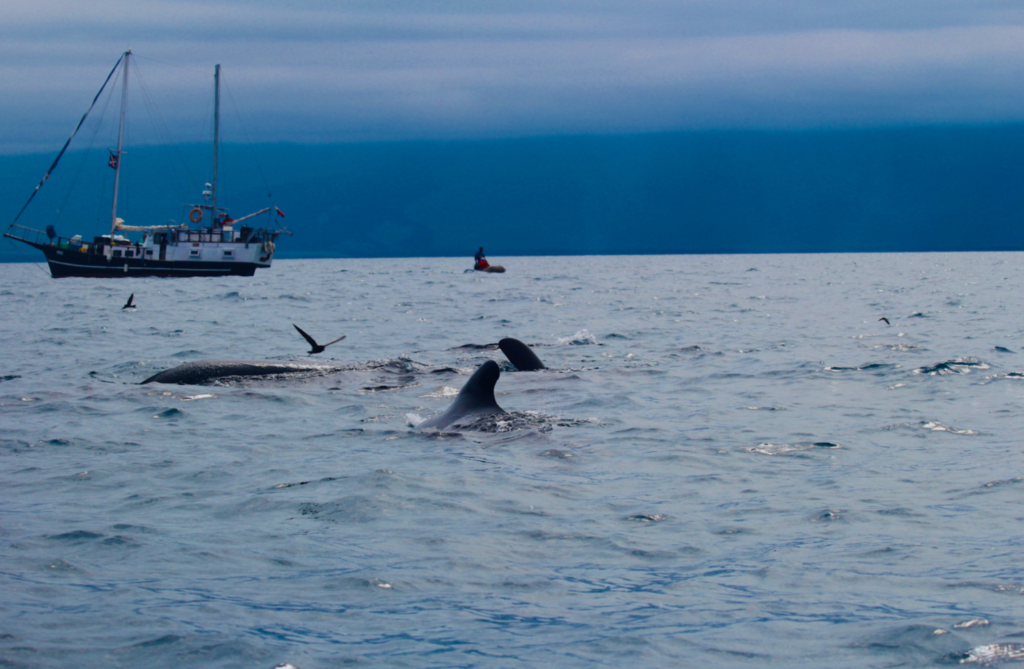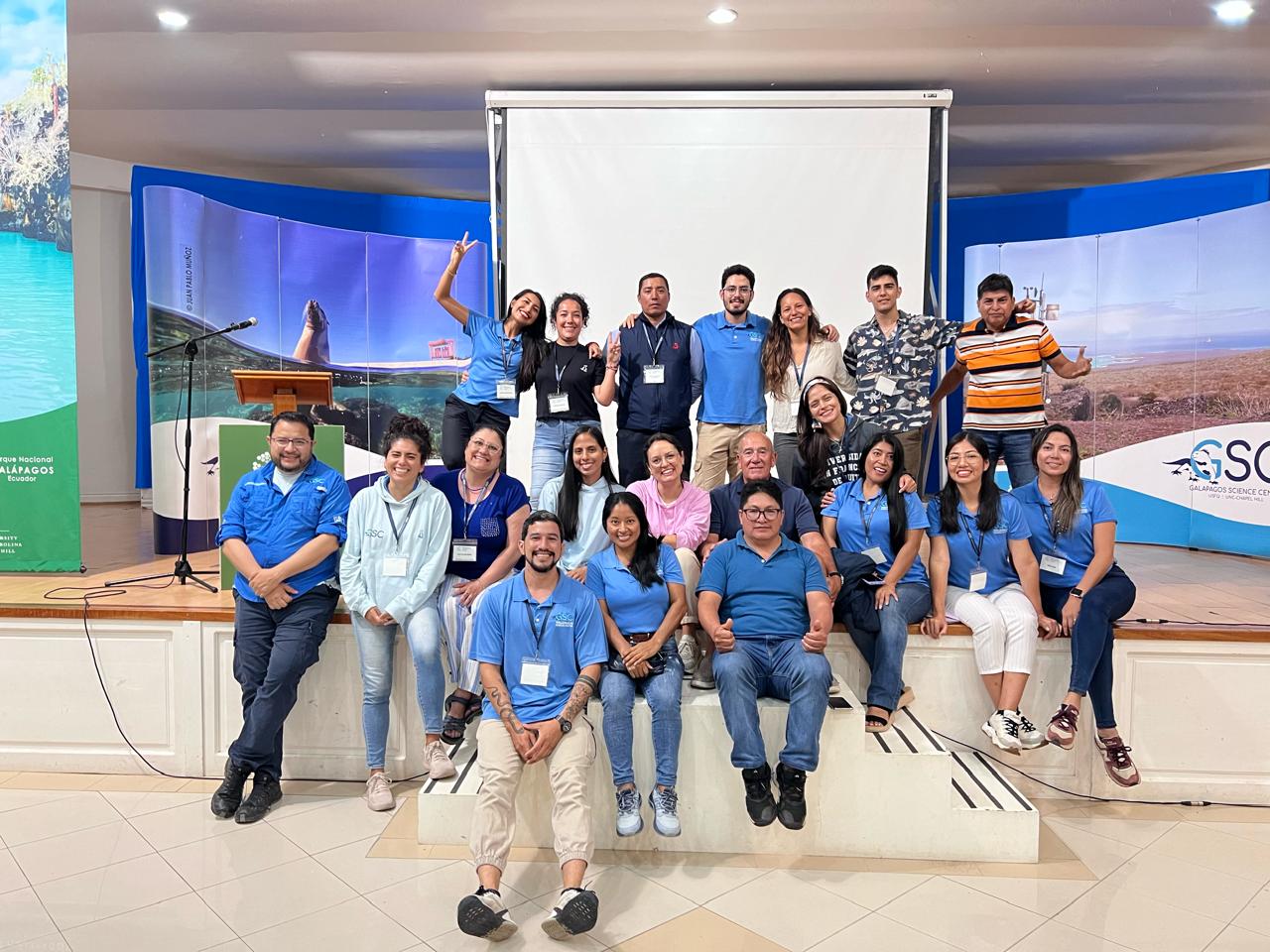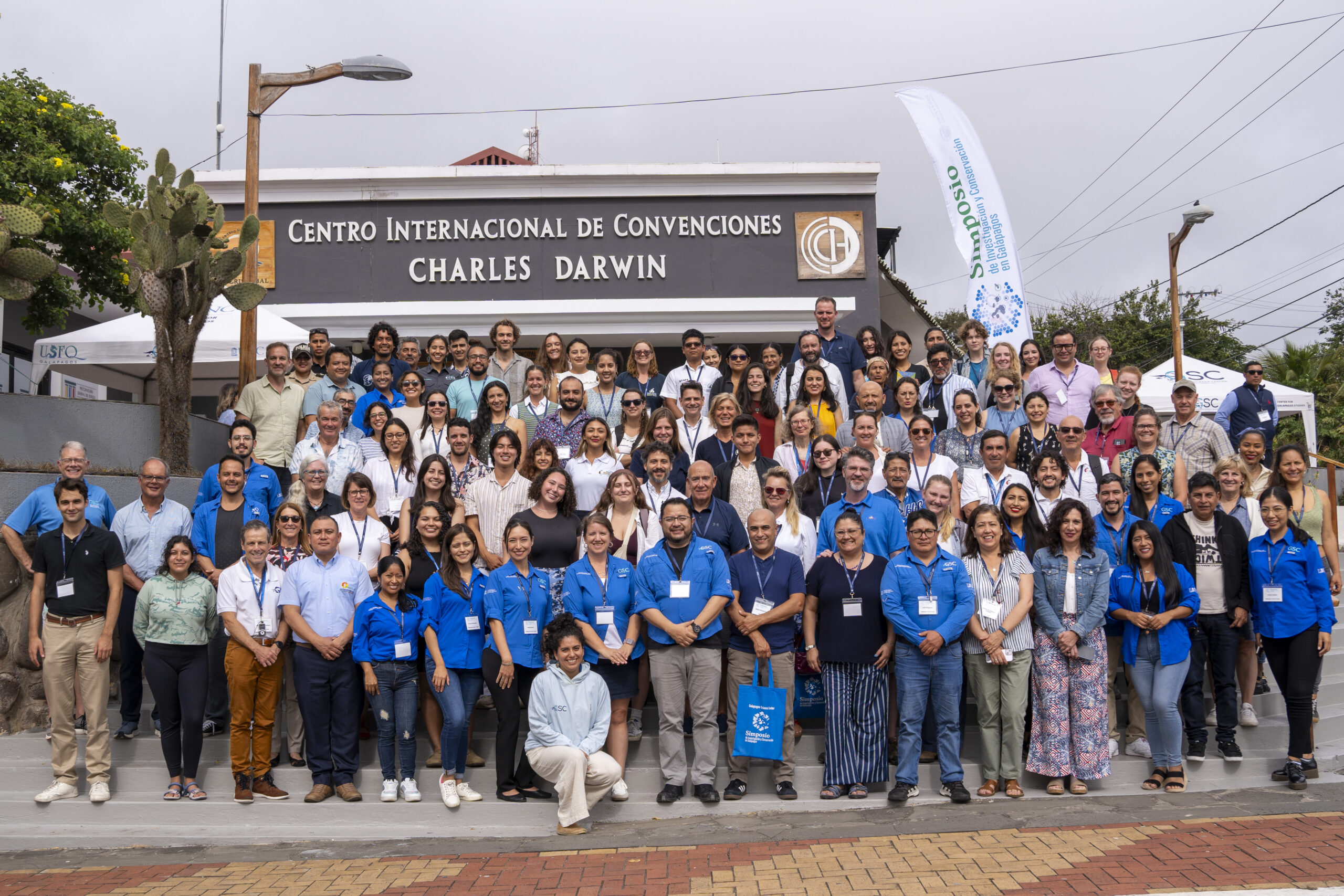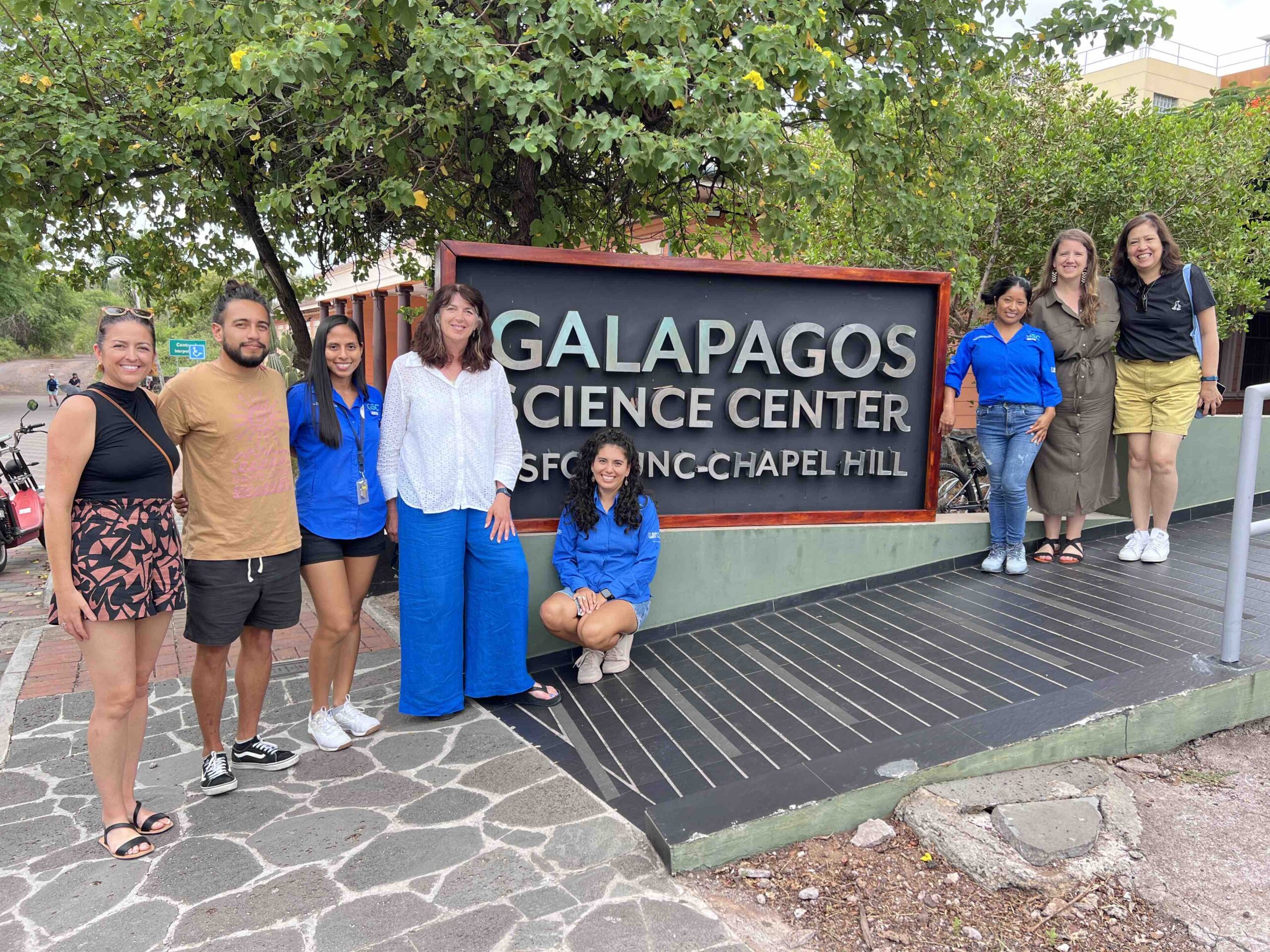A field expedition observing a group of pilot whales
Their original goals were simple: learn. After many years of searching for and registering cetaceans in the Galapagos, the data is coming together to shed light on how these species are using the Galapagos waters.
Up until last autumn, limited research had been done on the dynamics of blue whale populations – specifically movements of blue whales and other cetaceans in the Galapagos. This past year, Dani has focused on three main efforts: analyzing the Cetacea Galapagos Program’s citizen science data, continuing her field work around whale sample analysis, and securing partnerships to expand to new research techniques such as acoustic monitoring and sample analysis.
CITIZEN SCIENCE PROJECT DATA ANALYSIS
In 2010, scientists at the Galapagos Science Center started the Cetacea Galapagos Program as a research initiative in conjunction with the Galapagos National Park. The project’s main aim is to collect scientific information on whales and dolphins in Galapagos.
A year later in 2011, Dani completed her undergraduate thesis at Universidad San Francisco de Quito in Marine Ecology studying the abundance and distribution of cetaceans in an important channel on the west area of the Galapagos. She noted that citizen science reports and sightings have been primary sources of information on species of cetaceans around the islands, specifically in remote areas such as the Galapagos. Researchers rely on this citizen science data to provide much needed information about species diversity, distribution, and temporality over the years around the Galapagos archipelago.
When the pandemic started, Dani and her team had been accumulating this observation data for over ten years. “The pandemic caused the project to be put on hold, and citizen science data being collected dropped due to the lack of tourists moving around the islands, so we decided to take all of the information we had and see how the local cetacean diversity were doing and what the reports can tell us,” said Dani.
The idea was to analyze this data to find out what species of cetaceans are being sighted as well as where within the Galapagos Marine Reserve, and also how the local Galapagueño community and visitors contribute to the program. Of the 26 species of cetaceans registered in the Galapagos, the data shows that only 19 species have been sighted since 2010, with a fluctuation during the years depending on oceanic conditions. Additionally, some species of dolphins that used to be common in the area have rarely been spotted, while there has been an increase in sightings of other species such as blue whales and orcas.
“It is important to standardize the data collection process because of how important the Galapagos is in terms of diversity of species. We want to include more citizens in the process of conservation science. Citizen science could be the main source of this data in the long term. We prioritize working with locals to include them as part of the scientific community, and because we need the data,” said Dani.

CONTINUING FIELD WORK
With a third year of La Niña in a row, cold waters are forecasted for the Galapagos this winter. La Niña events typically bring in higher productivity, which means more food for cetaceans and other sea animals, which increases the probability of sightings.
Part of the aim for the citizen data is to compare whale sightings and visual health status against the cold and warm winter seasons in different years. Dani’s team is taking to the field with drones, since this allows them to collect measurements of whale length and width from the air that would be hard to estimate from a boat or on land.
“The images we take with our drones provide a reference size of the individuals and allows us to compare if they are fat or thin for the season Since La Niña events provide productive waters, the hypothesis is that animals will be fatter compared to less productive seasons,” said Dani.
The team goes out on the boat to look for cetaceans in one of two ways.
“We either take out a liveaboard boat for many days, or we just get a small fishing boat and go around one part of the island. We mostly use photography to identify the individuals, and drones to measure them. We count the groups, measure any type of behavior we see, and take biopsy samples,” said Dani.
“Whales are highly mobile and hard to track. It is important to study more individuals and groups of cetaceans to improve our spatialization data,” said Dani. In the coming years, Dani and her team will continue to utilize high-tech tools to study what makes up the local and migratory cetacean populations and how they are doing in the Galapagos,” said Dani.

NEW COLLABORATIONS
Working on the citizen science data analysis and continuing trips to the field have kept Dani busy, but her team has established some new partnerships to continue improving their research, gaining new partners and new perspectives.
One new collaboration for the group involves working closely with veterinarians from NC State University under the supervision of Dr. Diane Deresienski and Dr. Greg Lewbart, who help take basic sample data, focusing on health assessments of a variety of dolphin species.
Dani has also been working closely this past year with Alessandro Bocconcelli from Woods Hole Oceanographic Institution around better understanding vocalizations of cetaceans – mostly focusing on blue whales – through passive acoustic monitoring. “Vocalizations can help us determine what species of cetaceans we are listening to and even what population they belong to,” says Dani.
This year, Dani has had multiple opportunities to present her work. She met with many leaders in the field at the World Summit on Island Sustainability, celebrating the 10th anniversary of the Galapagos Science Center this past summer. Dani also discussed her research at the V. Mastozoology congress in Ecuador as a key speaker, among other small seminars as part of outreach efforts to communicate and encourage users of the Galapagos Marine Reserve to join their citizen science initiative.
Moving forward, Dani and her team will continue to study cetacean species and populations that frequent the waters of the Galapagos Islands, where they are going, and where they come from. Her team will continue to gather data from over the years – from citizen science observations to changes in climate like La Niña and El Niño – to analyze how these species are doing and what their status says for the health of the marine environment and the world as whole.

Video created by Carlos Gavela, Archipelago Films
Photos by: Kathy Townsend and Carlos Gavela
Written by Molly Herring, UNC ’23






